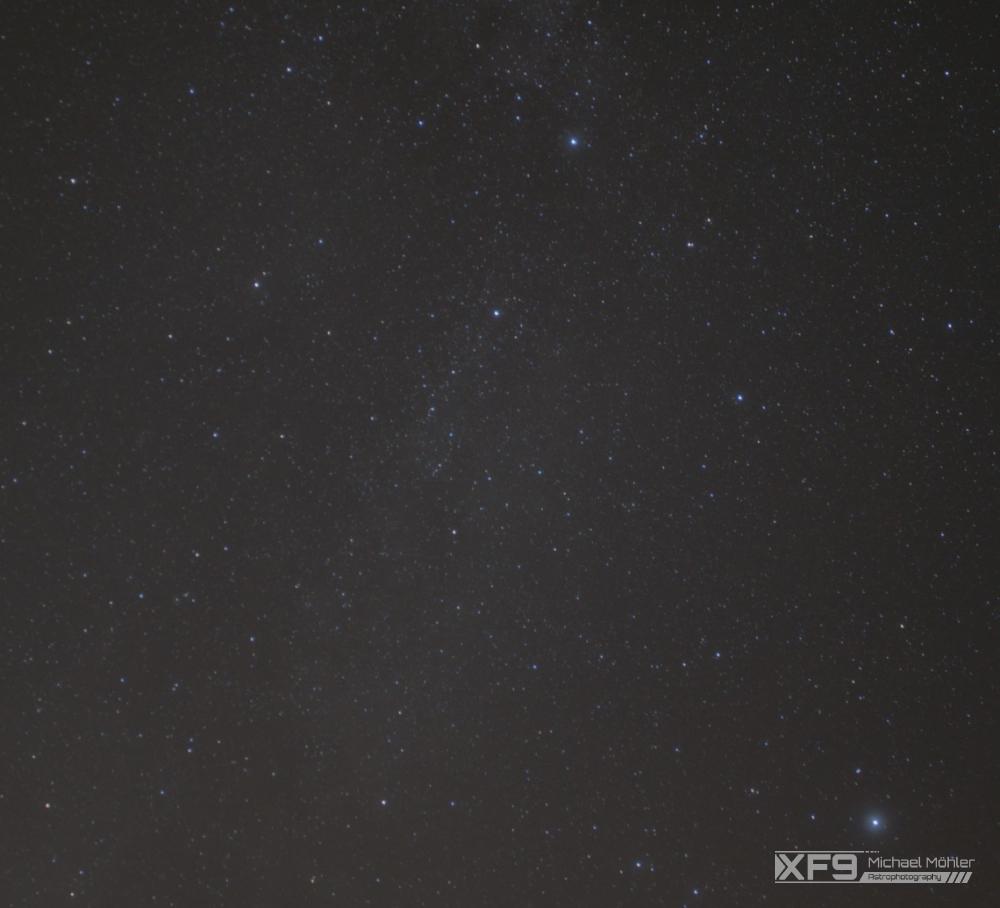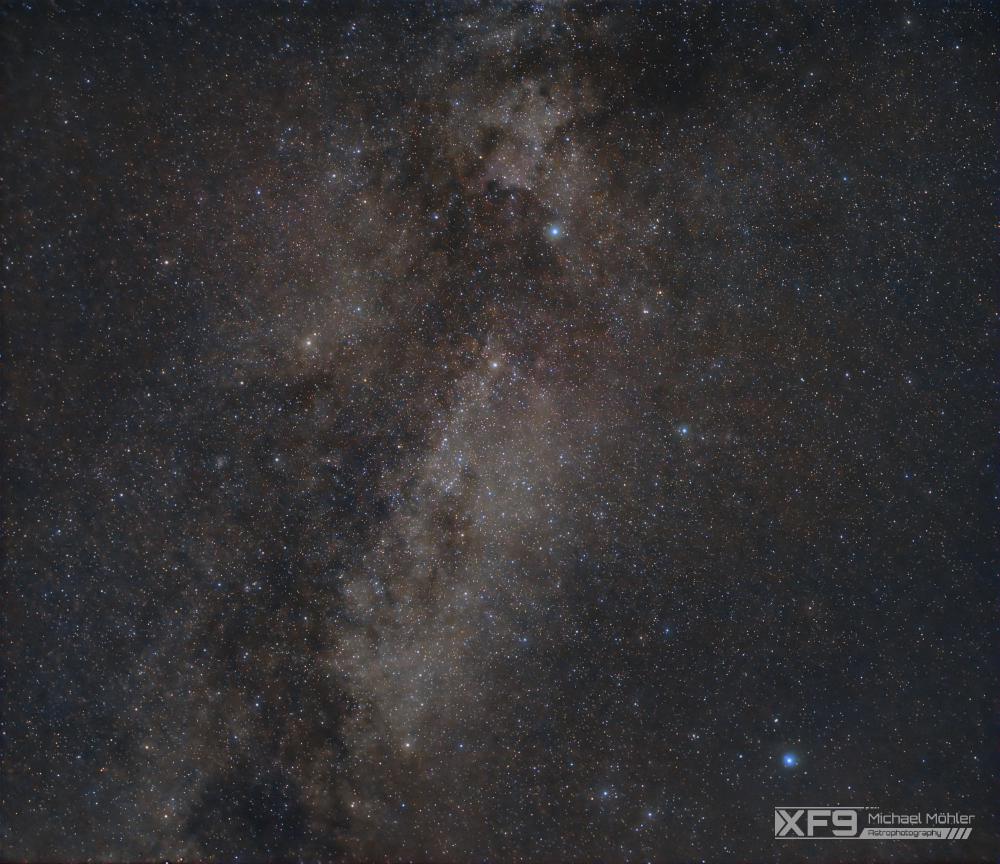My journey so far
A big hobby of mine, besides astrophotography, is to ride my bike. 1.5 years ago I did it mostly at night, when everyone was asleep. During that time we also moved from the big city to the suburbs of a much smaller city. One thing led to another and so I was out there, at night, and the sky cleared up, revealing hundreds of starts and I needed to stop to admire the view - for nearly an hour!
During that hour I had an urge to capture that moment. So I did took a very blurry image with my phone. But back in my mind was that old DLSR I hadn’t used in ages and the photo tripod I found on the side of the road. While I waited for clear skies to take both things with me, I did read up on photographing the night sky, stacking and basic stretching. So next chance came and I took the camera and tripod. The result wasn’t good by any means but I was hyped!
So I read up some more and a few days later I did capture this:

It doesn’t look like much if you are used to the colorful images of nebula and galaxies, but back then it was way better than what I hoped for. If you look closely enough you can even spot the milky way!
What you are looking at here is the constellation of cygnus, taken with a Canon 1000D (aka Rebel XS) on a basic tripod and just a histogram stretch applied. It’s not much but I really loved this image.
So time goes by and I put it in storage to keep for later.
Revisiting the old data
Like I said, time goes by … I take more images, learn new things, buy new gear and getting images I could never have dreamed of. After I took my image of the Heart and Soul Nebula I was sorting my data and stumbled across this old image of mine. I instantly brought a smile to my face, remembering the “good ol’ days” so to speak. It also woke my curiosity if I, maybe, could polish it up a bit with my current processing techniques. So I loaded the images in PixInsight and started stacking.
The result is .. better than I could have imagined:

The milky way is more than visible and one can clearly see it’s structure. If you know where to look you can even make out some Deep Sky Objects like the North American Nebula!
The result is staggering and I could have never imagined what’s inside this old dataset which consists only of a handful of images I did hand-track in a cold winter night.
Why to keep old images
So, to come back to the original question: why should you keep your old data? If you did look at the two images above it’s clear why - to rediscover them. Not only for the data that’s inside them but also for the memories it brings back. So keep ’em if you are just starting out. Keep ’em if you are advanced. Keep ’em anyway :)
